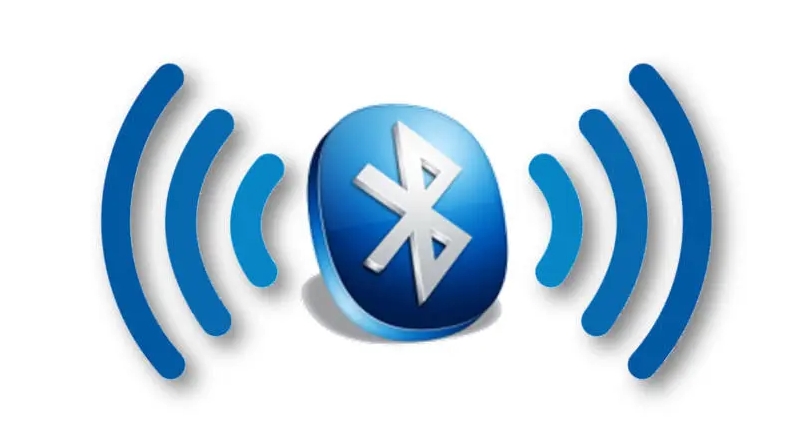Email cannot be empty
Password cannot be empty
Email format error
Email cannot be empty
Email already exists
6-20 characters(letters plus numbers only)
The password is inconsistent
Email format error
Email cannot be empty
Email does not exist
6-20 characters(letters plus numbers only)
The password is inconsistent


Bluetooth 5.3 technology
What features have been upgraded in the continuously updated Bluetooth protocols?
As a short-range wireless connection technology, Bluetooth has the characteristics of low power consumption, low cost, and convenience, and is widely used in scenarios such as wireless headphones, smartwatches, and wireless remote controls. It is one of the mainstream technologies for wireless communication.
Since the first version of Bluetooth was introduced in 1999, Bluetooth technology has developed for more than 20 years. From Bluetooth 1.0 to Bluetooth 5.3, the continuously updated Bluetooth protocols have upgraded several functions.
Bluetooth 1.0
Transmission rate of 748~810 kbps, simplex transmission, susceptible to interference, difficult to distinguish between primary and secondary devices.
Bluetooth 1.1
The transmission rate is between 748~810 kbps and can only operate in simplex mode. It is susceptible to communication interference from products operating at the same frequency. It supports Stereo audio transmission requirements, but the parameters such as bandwidth, frequency, and response time do not meet the requirements. Therefore, it is not considered the best protocol for Stereo transmission applications.
Bluetooth 1.2
The transmission rate remains unchanged, but with the addition of anti-interference frequency hopping function in Bluetooth 1.1 version, it supports single channel playback. However, the performance is still not satisfactory.
Bluetooth 2.0
Bluetooth 2.0 is an optimized and improved version of 1.2, with a transmission rate of around 2 Mbps. This version of Bluetooth module can achieve full-duplex operation, allowing for simultaneous transmission of files and voice information, enabling real-time two-way communication. Power consumption is relatively reduced, and support for stereo sound is introduced.
Bluetooth 2.1
This version of the Bluetooth module supports pairing between mobile phones and Near Field Communication (NFC) mechanism for close-range communication.
The Sniff Subrating feature allows setting the interval for sending confirmation data between two devices. By extending this interval, the power consumption of the Bluetooth chip can be reduced.
The Bluetooth protocol in this version supports full-duplex communication mode, enabling real-time bidirectional interaction of data.
Bluetooth 3.0
With the use of a brand new protocol, the transmission rate can reach up to 24Mbps, significantly surpassing the transmission rate of Bluetooth 2.0. This enhanced protocol also supports video transmission.
Bluetooth 4.0
Implementing ultra-low power consumption; low cost, low latency, capable of achieving a low latency of 3ms, and AES-128 encryption for higher security while ensuring performance. The device can support multiple connections and theoretically achieve a transmission distance of up to 100 meters.
Bluetooth versions after 4.0 belong to the Low Energy Bluetooth category.
Bluetooth 4.1
Implementing connectivity to the network through the IPV6 protocol to enhance user convenience and improve user experience.
AES Encryption Technology: Achieving More Secure Connections through Hardware Encryption Techniques.
Bluetooth 4.2
By integrating with 6LoWPAN, data transmission speed can be improved, leading to enhanced security.
Bluetooth 5.0
More advanced Bluetooth chips that support independent reception of audio for left and right channels, with stronger data processing capabilities and lower latency.
Increase transmission distance: can reach 300 meters.
Beacon:Provide broadcasting services.
Lossless transmission: Supports 24bit/192KHz lossless audio source transmission.
Bluetooth 5.1
AOA function: It can achieve indoor positioning with an error of within 1 meter, providing more accurate indoor positioning.
Bluetooth 5.2
Transfer rate of 42Mbps, theoretical transmission distance of 300 meters. Enhanced ATT protocol, LE power control, and LE synchronous channel functions are added.
Multi-master multi-slave: In the master-slave integrated role, it can simultaneously connect to 7 slave devices and can be connected as a slave role by another master device.
Long Range mode: Effectively improves the transmission distance and increases the communication range.
Supporting large broadcast packets: effectively improving transmission speed.
Expanded broadcast packet multiplexing: Multiplexing 37 channels for transmission, with strong anti-interference capability and fast transmission.
LE Power Control Function: Dynamically optimize the transmission power between connected devices based on signal strength variations, while ensuring signal quality and reducing power wastage.
Bluetooth 5.3
The transmission rate is the same as Bluetooth 5.2, but with lower latency, longer battery life, and stronger anti-interference capability.
Support periodic broadcasting with Advertising Data Information (ADI) to effectively improve communication efficiency.
ADI includes a Broadcast Data ID (DID) and a Broadcast Group ID (SID). The Broadcast Data ID is mainly used to differentiate different broadcast data contents, while the Broadcast Group ID is used to differentiate different broadcast groups.
Add LE Enhanced Connection Update feature, easily achieve low power consumption;
Add LE Channel Classification feature, reduce mutual interference between devices;
Add Host setting Controller key length feature, improve security;
Completely remove High Speed Configuration (HS) and related technical specifications.
In conclusion, the higher the Bluetooth version, the more powerful the functionality. Bluetooth versions are backward compatible.
The Bluetooth version is now being updated rapidly. Compared to previous versions, the latest Bluetooth 5.3 offers significant improvements in transmission speed, stability, security, and more powerful functionality, leading to a wider range of applications. However, the most important aspect for users is the consumer experience.
Bluetooth is a great technology, and I hope that the updates and upgrades in versions will allow it to excel in the field of the Internet of Things.

